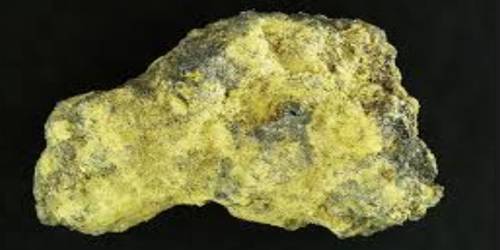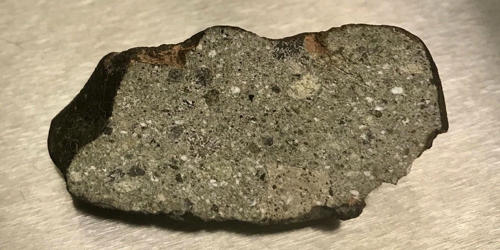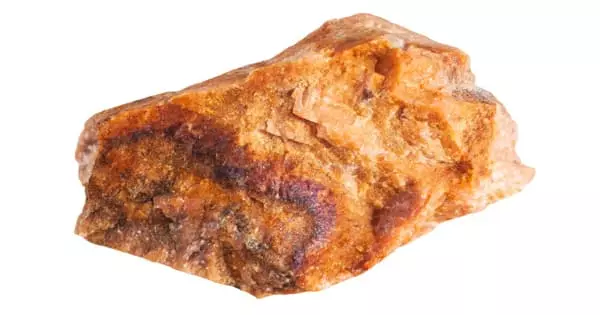Chapmanite is a rare silicate mineral belonging to the nesosilicate group, discovered in 1924, and named in honor of the late Edward John Chapman (1821–1904), a geology professor at the University of Toronto. Chemically, it is an iron antimony silicate, closely related to bismutoferrite, and may contain aluminum impurities. It is closely associated with silver mines, most notably the Keeley mine in Ontario, Canada, found in quartz veinlets containing graphite in gneiss. It takes the form of a powdery, yellow-green, semitransparent solid, and leaves a streak of the same color. Early German texts have referred to the mineral as antimon-hypochlorite.
It was recently rediscovered in the southern hemisphere at the abandoned Argent lead mine in Bushveld series rocks of South Africa.
General Information
- Category: Phyllosilicate
- Formula: Fe2Sb(SiO4)2(OH)
- Crystal system: Monoclinic
- Crystal class: Domatic (m) (same H-M symbol)

Properties
- Color: Yellow, green, olive green
- Crystal habit: Earthy massive; granular
- Cleavage: Poor
- Fracture: Conchoidal to irregular
- Mohs scale hardness: 2.5
- Luster: Nonmetallic, dull to adamantine
- Streak: Yellowish green
- Specific gravity: 3.69-3.75
Occurrence: In veinlets cutting gneisses containing varying amounts of graphite (Smilkov, Czech Republic). Main localities includes; Keeley-Frontier Mine (Canadian Keeley; Frontier Mine; Keeley Mine), South Lorrain Township, Cobalt-Gowganda region, Timiskaming District, Ontario, Canada
Association: Silver (Keeley mine, Canada).
Information Source:
















